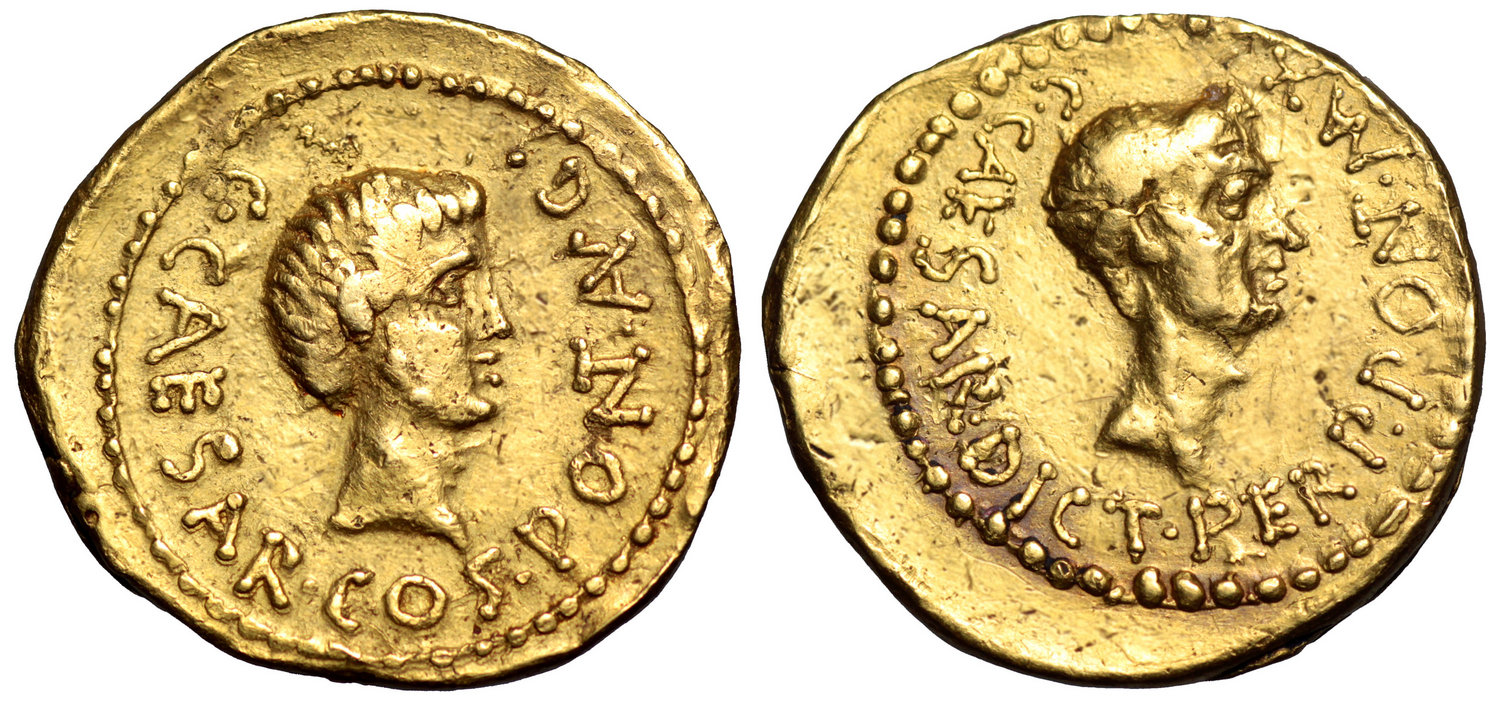Imperial Image: Octavian Comes to Rome 44-42BC
0.0(0)
0.0(0)
New
Card Sorting
1/3
Earn XP
Description and Tags
Imperial Image Classical Civilisation A Level OCR
Study Analytics
Name | Mastery | Learn | Test | Matching | Spaced |
|---|
No study sessions yet.
4 Terms
1
New cards
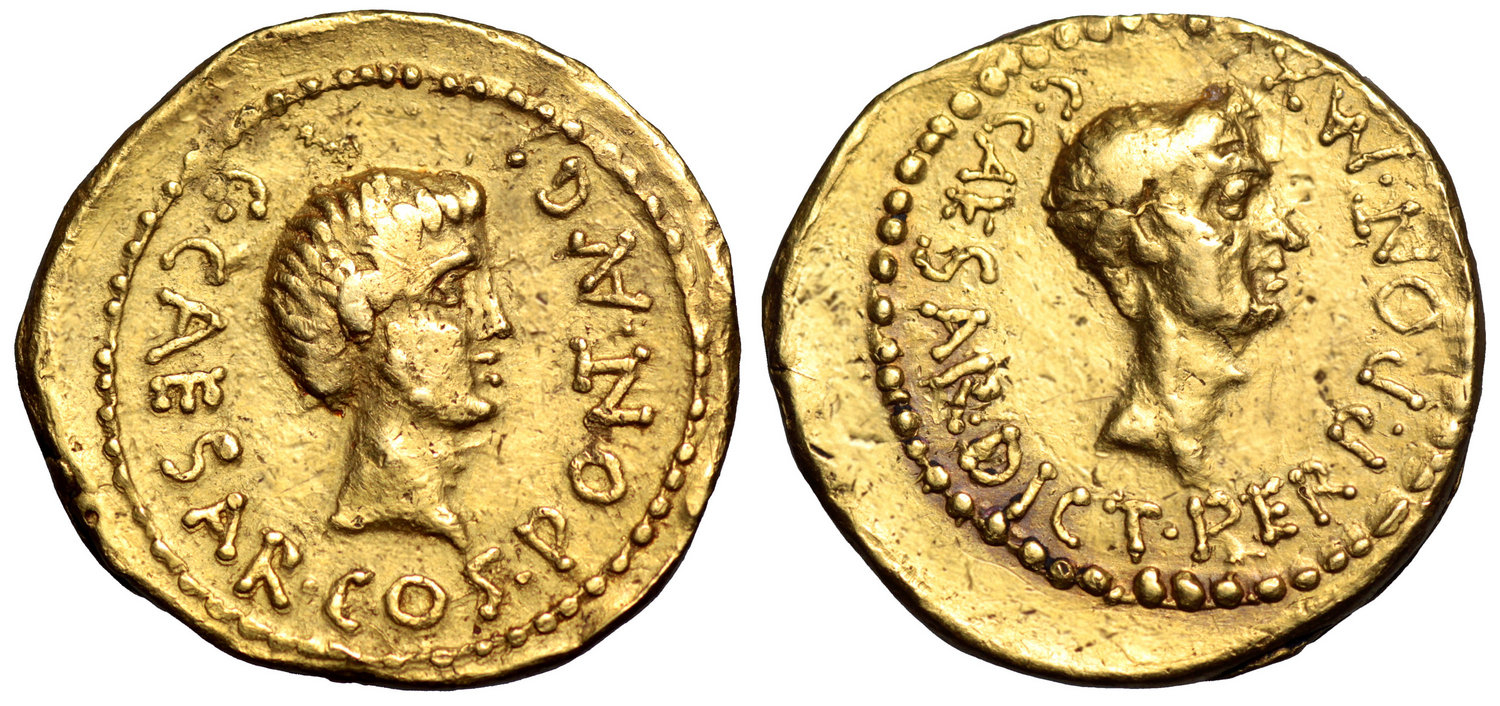
Aureus
Obverse: bare head of Octavian
Reverse: head of Julius Caesar with laurel wreath
Date: 43BC
Material: Gold
Text: Gaius Caesar (Octavian), consul, pontifex, augur // Gaius Caesar (Julius), dictator in perpetuity, pontifex maximus
Obverse: bare head of Octavian
Reverse: head of Julius Caesar with laurel wreath
Date: 43BC
Material: Gold
Text: Gaius Caesar (Octavian), consul, pontifex, augur // Gaius Caesar (Julius), dictator in perpetuity, pontifex maximus
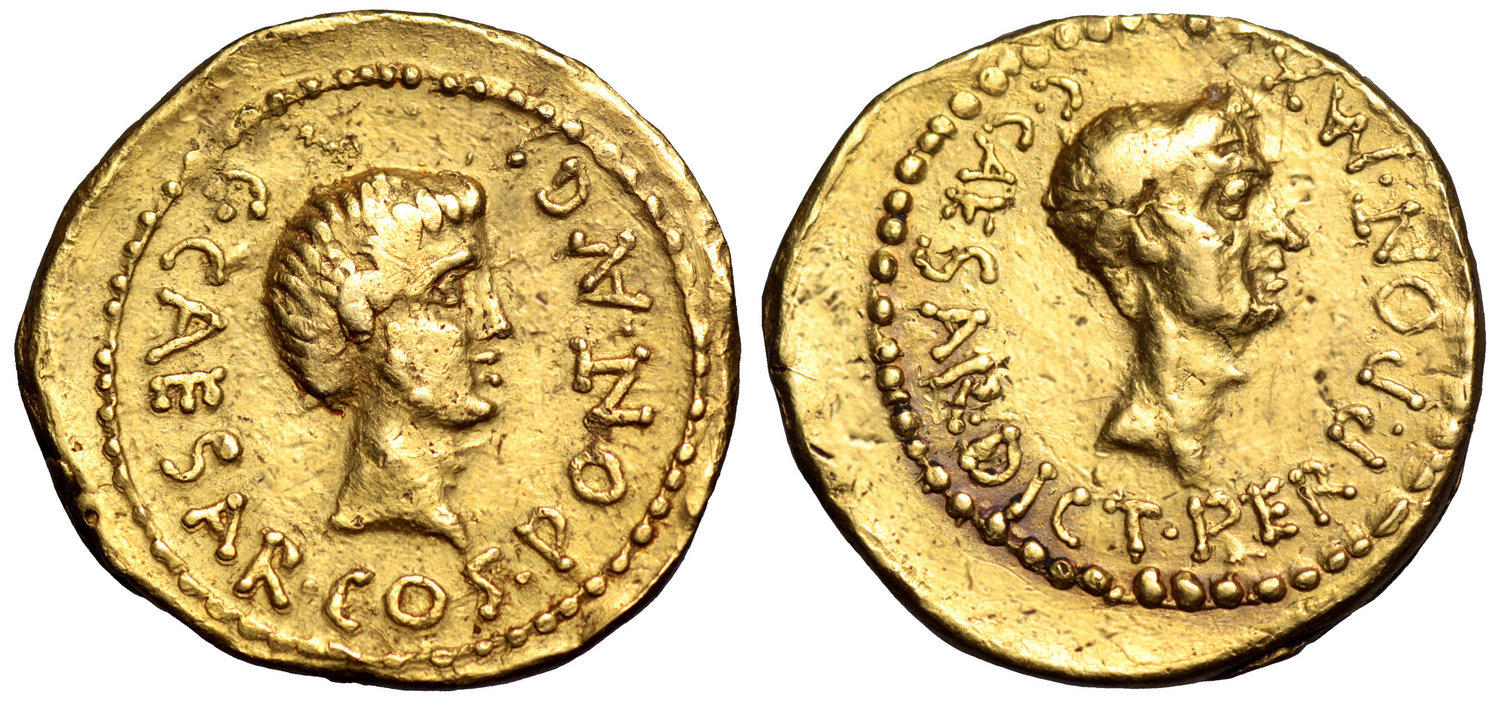
2
New cards
What was the purpose of the Aureus of Julius Caesar and Octavian?
The coin served to align the young Octavian with Julius Caesar’s memory and encourage viewers to think of Octavian as the heir to Julius Caesar’s power. This technique is called co-marketing: by placing himself alongside Julius Caesar, Octavian can highlight their similarities as well as their differences.
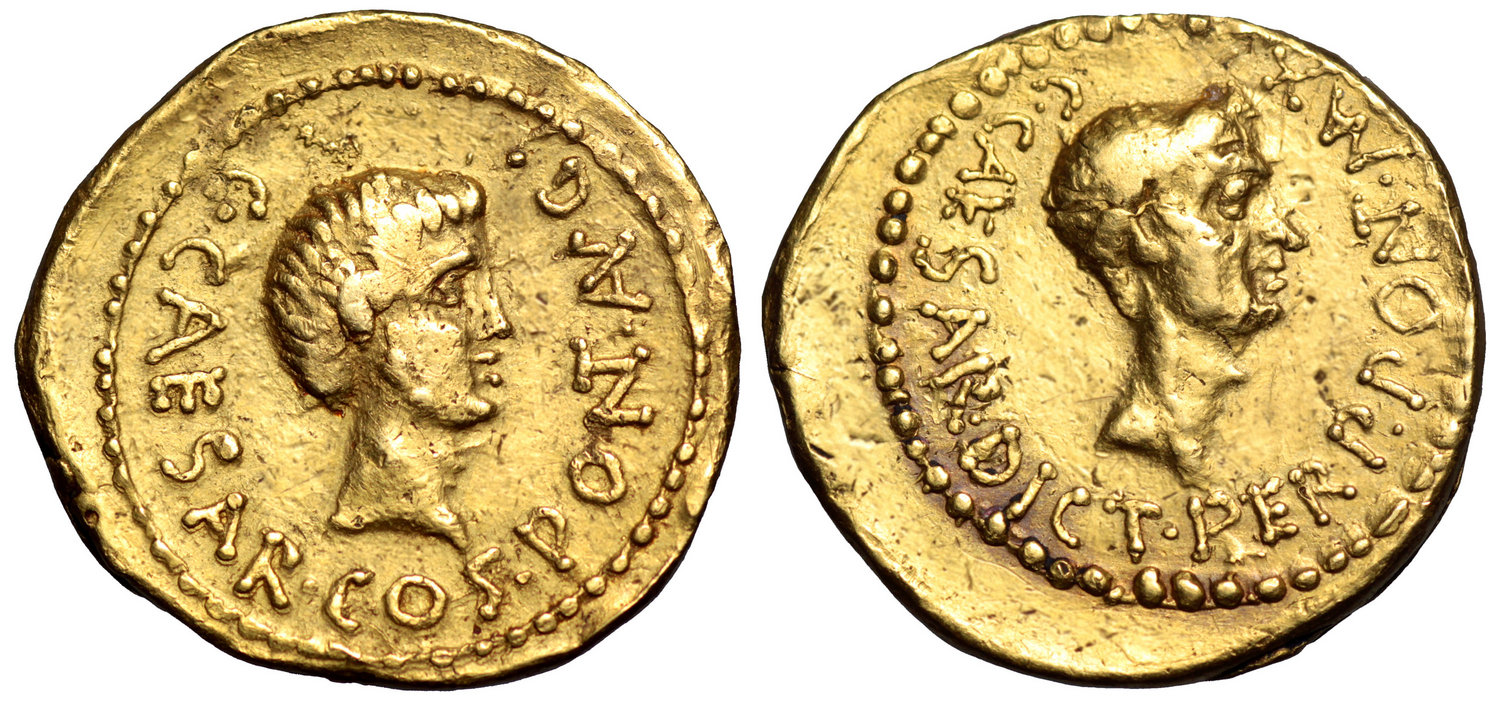
3
New cards
How did the Aureus of Julius
Caesar and Octavian demonstrate similarities between the two men?
Caesar and Octavian demonstrate similarities between the two men?
- Julius Caesar was one of the first Romans to use his own portrait on coins, an example which Octavian has followed
- They have a physical resemblance on the coin, with similar facial structure and a similar traditional Roman male haircut: this could highlight their familial connection
- Octavian uses the Caesar name to further stress their family connection
- Typically gold coins were only used for Gods: many believed Caesar had been deified after a comet was seen in the sky during the 44BC Olympics. Octavian emphasises that his father is a God and he is strongly connected to divinity
- Julius Caesar wears a laurel wreath, highlighting his military victories and suggesting Octavian will have similar victories
- They have a physical resemblance on the coin, with similar facial structure and a similar traditional Roman male haircut: this could highlight their familial connection
- Octavian uses the Caesar name to further stress their family connection
- Typically gold coins were only used for Gods: many believed Caesar had been deified after a comet was seen in the sky during the 44BC Olympics. Octavian emphasises that his father is a God and he is strongly connected to divinity
- Julius Caesar wears a laurel wreath, highlighting his military victories and suggesting Octavian will have similar victories
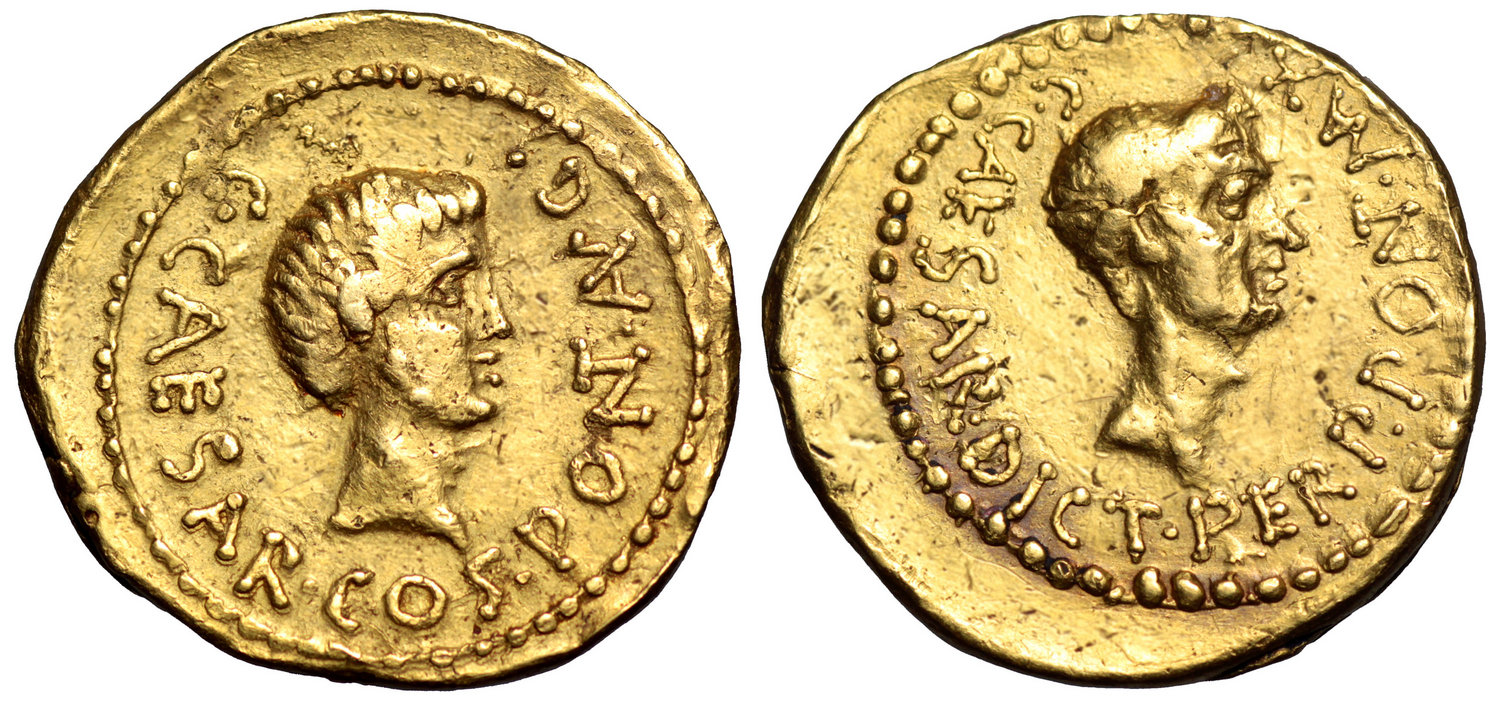
4
New cards
How did the Aureus of Julius
Caesar and Octavian demonstrate differences between the two men?
Caesar and Octavian demonstrate differences between the two men?
- The list of positions on Julius’s side is “Dictator in Perpetuity, Pontifex Maximus” are both positions that are held for life, whereas the positions on Octavian’s side “Consul, pontifex, augur” are held for a set amount of time. Consulship is fairly elected
- Julius’s assassins had believed he was a tyrant and his power was unconstitutional. So Octavian distances himself from this
- Julius Caesar is depicted with the laurel wreath, which was awarded after military victories. However, Caesar had begun to wear this all the time and people saw it as him trying to become a king as it resembled a crown
- Octavian wears no wreath, highlighting that he has no interest in seizing unconstitutional power
- Julius’s assassins had believed he was a tyrant and his power was unconstitutional. So Octavian distances himself from this
- Julius Caesar is depicted with the laurel wreath, which was awarded after military victories. However, Caesar had begun to wear this all the time and people saw it as him trying to become a king as it resembled a crown
- Octavian wears no wreath, highlighting that he has no interest in seizing unconstitutional power
